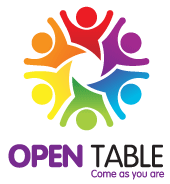God's work of art - A reflection for LGBT+ History Month
The LGBT+ History Month 2022 logo and theme: Politics In Art: The Arc Is Long’
THIS REFLECTION by Open Table Network Coordinator Kieran Bohan was written for our celebration of LGBT+ History Month which premiered on YouTube on Sunday 30th January 2022.
LGBT+ History Month in 2022 marks 50 years since the first Pride march in the UK, which happened in London on 1st July 1972. The date was chosen because it was the Saturday closest to the anniversary of the Stonewall Riots in New York, which began on 28th June 1969 and lasted for six days.
The riots are widely considered to be a turning point that transformed the fight for the rights of LGBT+ people in the United States and around the world.
In those early days, the ‘gay rights movement’ took inspiration from Black civil rights campaigners in the US, such as Martin Luther King Jr, whose words inspired this year’s LGBT+ History Month theme:
The arc of the moral universe is long but it bends towards justice.
One of Dr King’s most trusted advisors, Bayard Rustin, was a gay man. He, and Dr King’s widow, Coretta Scott King, certainly believed that Dr King’s central mission was inclusive of LGBT+ rights, although Dr King was assassinated the year before the Stonewall Riots. [Source]
The Stonewall Riots made it clear that the ‘gay rights’ movement needed to be louder and more visible. They needed to get organized if change was going to happen.
The term ‘Black Power’ was used by the Black civil rights movement, recognising that Black people lacked power and justice. Organisers of the first Pride march in the world, in New York City to commemorate the first anniversary of the Stonewall Riots, considered using the term ‘Gay Power’ as a slogan, but they rejected it because they felt that:
gay individuals lacked real power to make change, but one thing they did have was pride.
One of the organisers explained:
A lot of people were very repressed, they were conflicted internally, and didn’t know how to come out and be proud. That’s how the movement was most useful, because they thought, 'Maybe I should be proud.'
The official chant for the march became, “Say it loud, gay is proud.” [Source].
Who are our icons?
One of the ways in which our communities have held onto a sense of Pride is to look for inspiration from ‘icons’.
The concept has changed over time to become more representative of our diversity, just as the ‘gay rights’ movement has grown to include LGBT+ people of all kinds.
In the UK, surveys of people’s ‘gay icons’ from 2007 and 2014 show an increase in people who identify as lesbian, gay or bisexual, and a need to recognise gender diversity, through the use of LGBT+ as a more inclusive term.
Our community’s desire for icons, or positive role models echoes the calls for visibility, representation and affirmation which began with the first Pride marches. We need to be seen, and heard, to be believed.
The word ‘icon’ simply means image, and has a more positive meaning in religious tradition than ‘idol’, which is associated with idolatry, that is, anything which we choose or allow to pull our primary focus away from God. In the Orthodox Christian tradition, which uses icons of religious figures in worship, icons are said to be ‘written’, not ‘painted’. The Orthodox Church believes making icons to be more a form of prayer than art, and that the iconographer’s hand is guided by God. Traditional icons are visual re-tellings of the story of the saint represented, and have been described as ‘soul windows’, ‘entrances into the presence of the Holy’ and reminders of God’s unconditional love.
They also recall that we are created in the image of God, as it says in the book of Genesis:
God created humanity in God’s own image, in the divine image God created them, male and female God created them.
- Genesis 1:27 Common English Bible
Though for us as LGBTQIA+ people, our faith communities do not always affirm this.
In Paul’s letter to the Ephesians, we read how:
We are God’s work of art, created in Christ Jesus for the good works which God has already designated to make up our way of life.
- Ephesians 2:10 New Jerusalem Bible
Each of us is created in the image of God, and it is a fine image to behold.
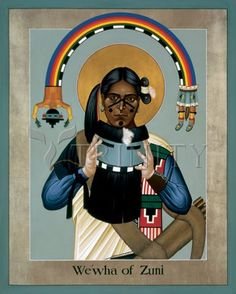
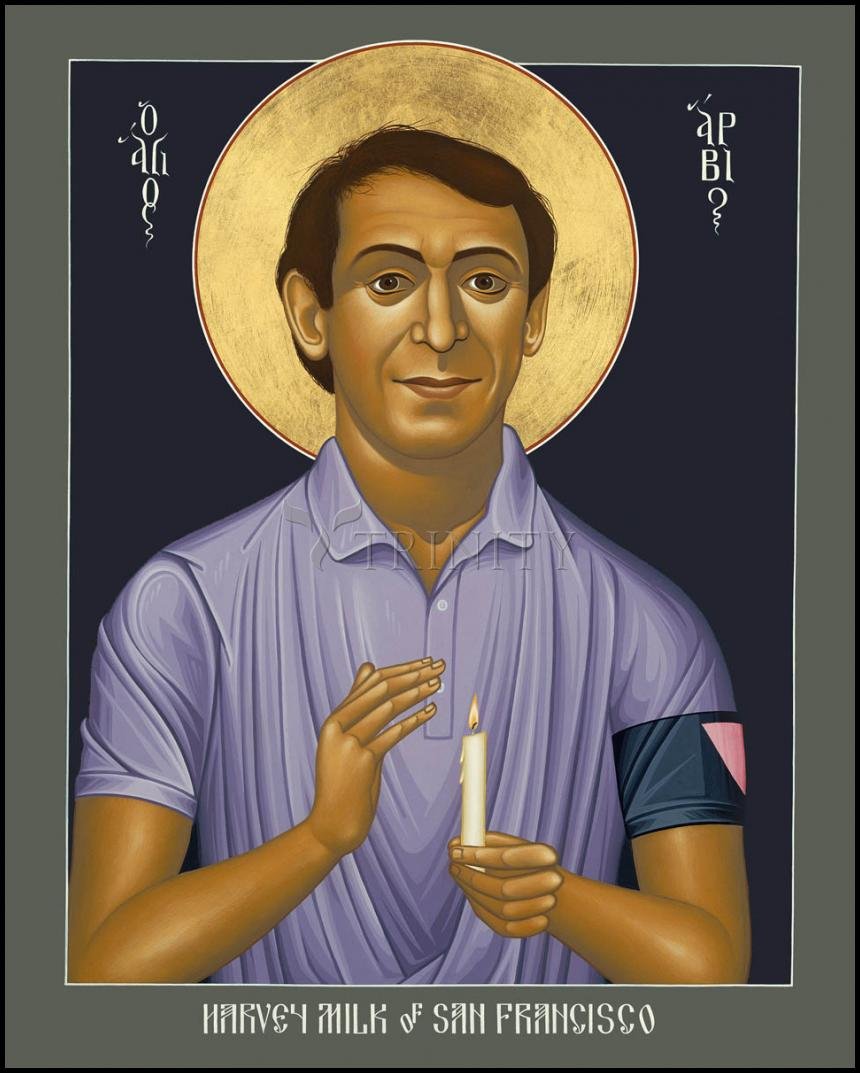
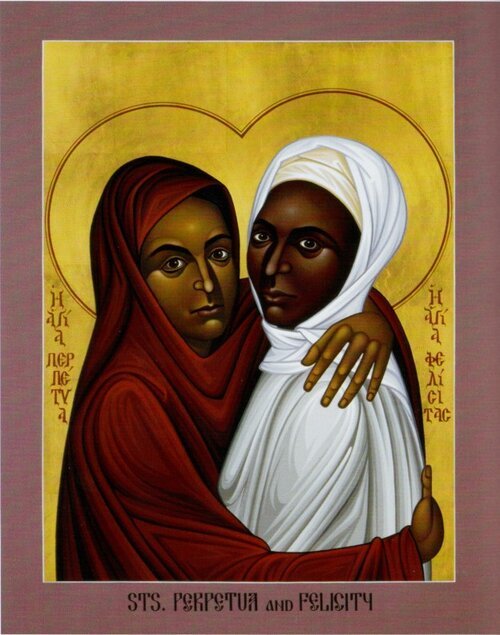
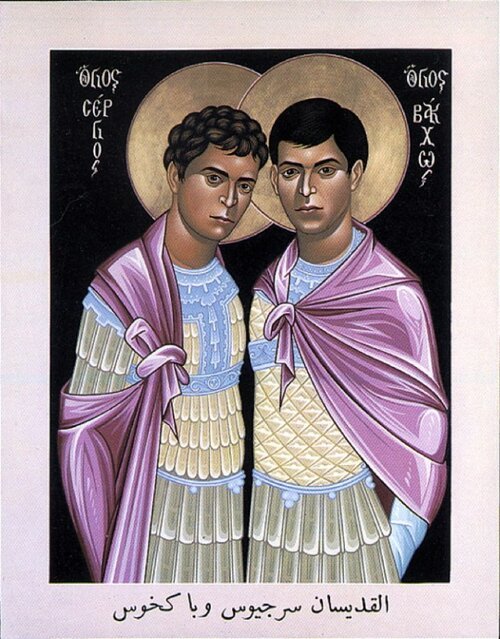
In traditional Christian icons, the person portrayed is often looking straight out of the image, at the viewer. The intention is to look, and be looked at, to see and be seen - so my life resonates with the life and story of the one portrayed in the icon. Contemplating an icon can remind me that I am not alone, as my divine image is beheld and beloved by the divine.
Modern icons may incorporate contemporary social themes, including people not considered saints in the traditional Christian sense.
Brother Robert Lentz, an American Franciscan friar, has painted people of various cultures, such as gender diverse ‘two-spirit’ Native American leaders such as We'wha of Zumi, and modern secular figures, including murdered gay politician Harvey Milk.
Lentz’s icons include Perpetua and Felicity, who were imprisoned for their faith in north Africa and died in 203 A.D. Like Ruth and Naomi in the Old Testament book of Ruth, Perpetua and Felicity are upheld by some as examples of love between women, and celebrated as the patron saints of same-sex couples.
Lentz’s icon of Roman Christian martyrs Sergius and Bacchus, believed to have been united in an early Christian same-sex blessing called ‘brother-making’, was first displayed at Chicago’s Pride Parade, and has become a popular symbol in the queer Christian community.
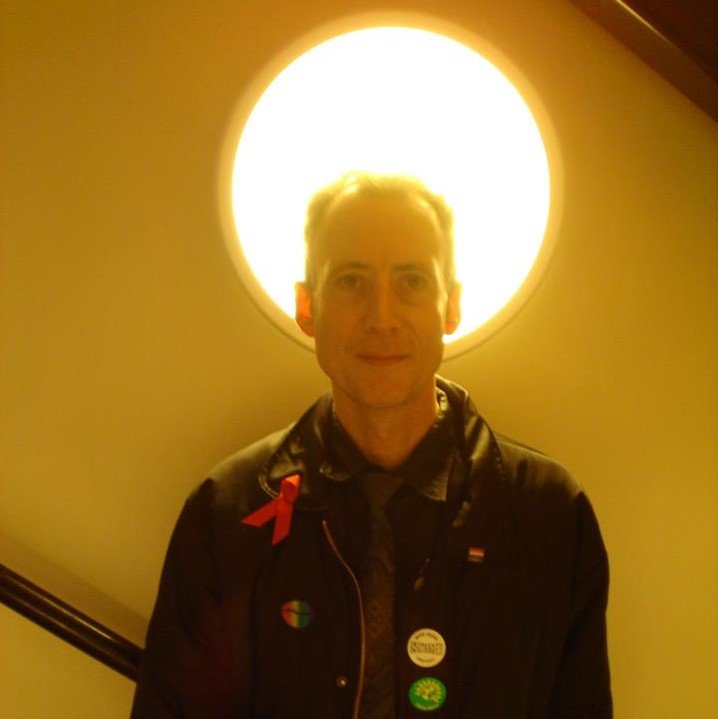
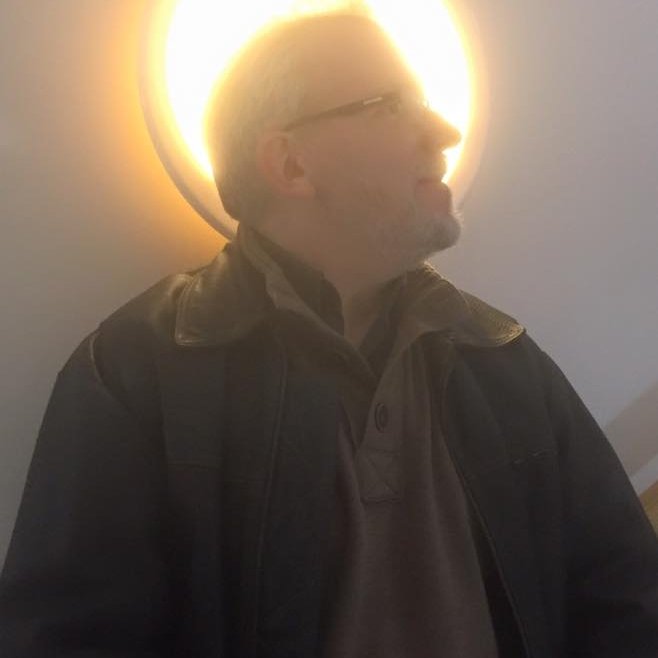
Here in the UK, gay Buddhist artist Tony O' Connell has photographed dozens of people with 'haloes' to reclaim holiness in those our faith communities do not recognise as holy.
His subjects include Peter Tatchell, who has spent 55 years campaigning for LGBT+ & other human rights, and anonymous LGBT+ people and allies, including one which may look familiar!
Five faces of LGBT+ History Month
LGBT+ History Month each year identifies five ‘faces’ (one each to represent the L,G,B,T and ‘+’ of the community) as examples of people from our history to inspire us. The Faces for 2022 are five artists who used their talents to express their political views and identity:
Keith Haring‘s dancing figures drew attention to the growing AIDS crisis of the early 1980s. He also designed the logo for National Coming Out Day.
Doris Brabham Hatt showed others how to start embracing civil rights and social change through her art and activism.
Fiore de Henriquez fought against fascism in the 1930s, and blurred the boundaries of gender.
Jean-Michel Basquiat decorated historically prominent black figures with crowns and halos.
Mark Aguhar created artwork that claims space for people who exist outside the gender binary, and challenged white privilege.
You can read more about the LGBT+ History Month Faces of 2022 on the LGBT+ History Month website.
So now it’s over to you:
Who are your ‘icons’, or positive role models?
How can we too be positive role models?
The early Christian saint Irenaeus wrote:
The glory of God is humanity fully alive. The life of humanity is the vision of God.
If each of us is an image of God, what is it within us, or our lives, that makes God visible?
